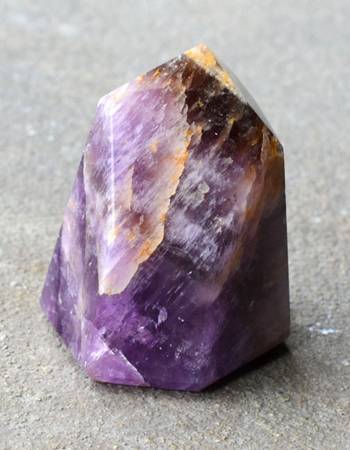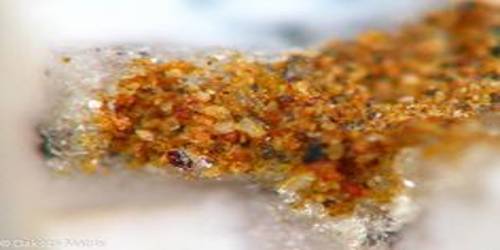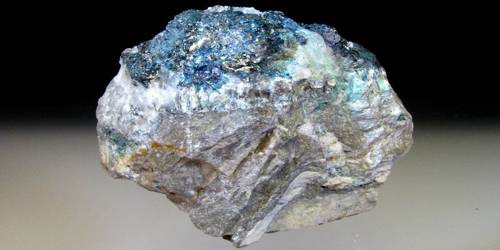Cacoxenite is an iron aluminum phosphate mineral with formula: Fe3+24Al(PO4)17O6(OH)12 . 17(H2O). is a mineral that is commonly an inclusion in quartz, especially amethyst. The inclusions in amethyst often detract from the amethyst as the brown acicular needles dampen the pure purple color to a less desirable brownish hue.
Cacoxenite was first described in 1825 when it occurred in the Hrbek Mines of Bohemia in the Czech Republic. It is associated with iron ores. The name comes from the Greek κăκός for “bad” or “evil” and ξένος for “guest” because the phosphorus content of cacoxenite lessens the quality of iron smelted from ore containing it.
General Information
- Category: Phosphate minerals
- Formula: Fe3+24Al(PO4)17O6(OH)12 . 17(H2O)
- Crystal system: Hexagonal
- Crystal class: Dipyramidal (6/m) (same H-M symbol).

Properties
Cacoxenite on its own is appreciated as a scarce phosphate mineral and is known from classic phosphate localities. It is often associated with other attractive and rare phosphates and can, therefore, represent some very nice mineral specimens. These specimens can be quite popular and attractive with a silky luster and a typical yellow-brown color.
- Color: Yellow to brownish yellow, reddish orange, golden yellow, deep orange, green; yellow in transmitted light
- Crystal habit: Acicular, radial, stellate
- Cleavage: None
- Fracture: Uneven
- Mohs scale hardness: 3-4
- Luster: Silky
- Streak: White
- Diaphaneity: semitransparent
- Specific gravity: 2.2 – 2.6
- Optical properties: Uniaxial (+)
Occurrence
It was first described in 1825 as an occurrence in the Hrbek Mine, Bohemia, Czech Republic. It occurs as a secondary phase in oxidized magnetite and limonite deposits. It also occurs in novaculites and in iron and phosphorus-rich sediments.
Information Source:
















